Blog
March 11, 2021
Juden Raus! Out with the Jews! – The Anschluss of Austria
By Emeritus Professor Konrad Kwiet, Resident Historian
On 12 March 1938, Hitler’s army marched into Austria. The subsequent Anschluss – the integration of Austria into the German Reich – signalled the beginning of the destruction of Jewish life in Austria. Austrians played a pivotal role in designing and implementing the ‘Final Solution’.
Holocaust survivor and Nazi hunter Simon Wiesenthal provides a revealing statistic:
“Only eight percent of the population of the Third Reich were Austrians. [However] Austrians were responsible for half of the murder of Jews perpetrated under Nazi rule.”
The Anschluss opened the flood-gates for an army of home-grown Nazis to give vent to their vicious Jew-hatred. In many places, demonstrations in front of Jewish homes were staged, demanding the departure of the inhabitants or owners. Public speeches and newspapers heralded the message “Juden Raus!” – “Out with the Jews!”
Jews were insulted and beaten up. Denunciations were widespread. Jews were arrested, often tortured. Some, mostly prominent Jews, were singled out to be punished and murdered in concentration camps. The first transport to Dachau concentration camp left Vienna on 1 April 1938.
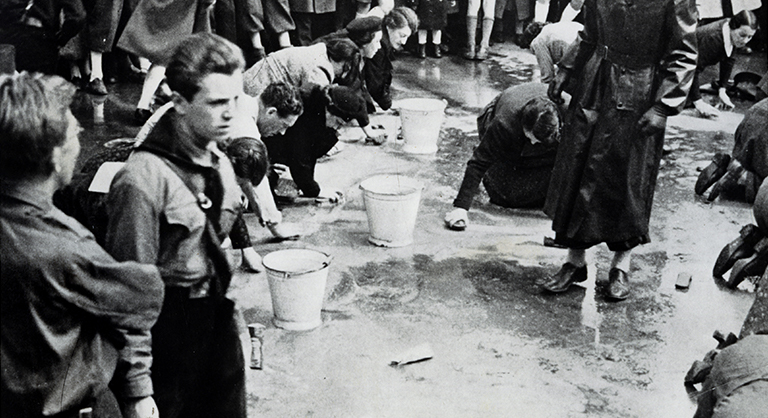
Hitler Youth members guard Jews forced to scrub the pavement, Vienna, March-April 1938. Courtesy Yad Vashem.
Jewish men and women were forced to join Putzerkolonnen – cleaning units – which were given the task of removing with brushes, or even tooth brushes, political slogans from pavements or walls. Onlookers responded with joy and applause.
Austrians lined up to stake their claims as tenants or buyers of much-coveted Jewish homes, seeking to benefit from the confiscation and distribution of Jewish belongings. Robbing the Jews was the largest theft in history.
On the day of the Anschluss, Heinrich Himmler and Reinhard Heydrich arrived in Vienna to supervise the setting up of the SS and Police systems. Three days later, the Gestapo established its headquarters in the majestic Auspiz Palais. The Rothschild Palais was selected to house the new Central Office for Jewish Emigration, where Adolf Eichmann and his henchmen organised the exploitation and expulsion of the Jews.
It did not take long to expel thousands of Jews from universities, schools and other institutions and to complete the “Aryanisations” of 27,000 Jewish-owned enterprises.
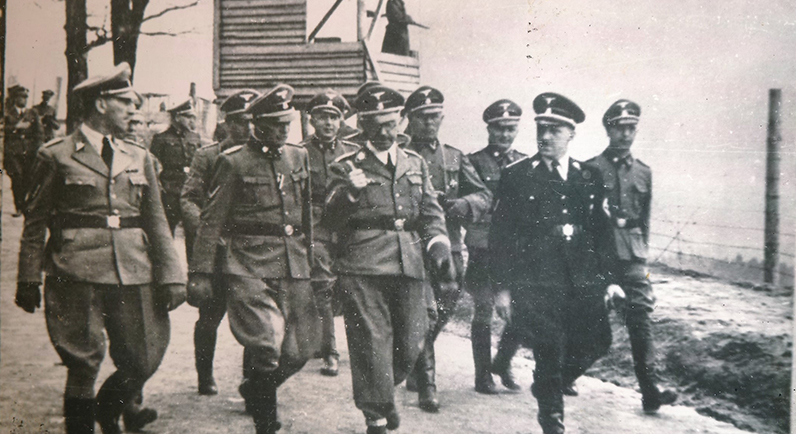
Photograph from Mauthausen concentration camp, Austria. SJM Collection.
In early August 1938, the construction of Mauthausen – Austria’s largest concentration camp – commenced. It was set up at an infamous granite quarry. Some 300,000 prisoners from all over Europe passed through this death factory and its numerous sub camps. More than 100,000 were murdered there. Not far away, the Hartheim Castle served as one of the killing centres of the Nazis’ so-called “Euthanasia program”, code-named T4-Aktion. Poison gas, lethal injections and starvation ended the life of 40,000 people with disabilities.
Austrian Jews responded in 1938 with shock, fear and despair to the beginnings of the Final Solution. The number of suicides increased sharply. Many Jews attempted to find refuge across the border, in particular to Switzerland, prompting Swiss authorities to impose restrictions and to encourage the Nazi government to mark the passports of Jews with the red capital letter J (for Jude, Jew).
Some Jews followed a traditional strategy of survival and converted to Christianity. However, this was not an acceptable solution under the Nazis’ Nuremberg Race Laws. It took a direct threat to their life to make them realise that their ties to and positions in their beloved country of birth were no longer secure.
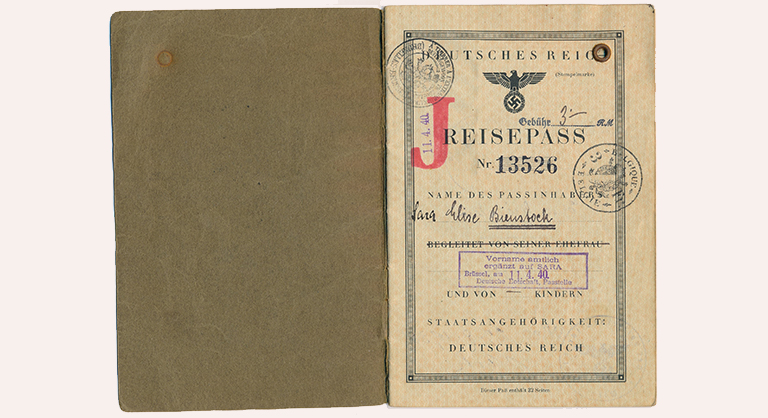
German Reisepass (passport) belonging to Elise Bienstock (nee Herzog), issued in 1938 in Vienna. SJM Collection.
This escalated in November 1938, when again the inflamed “wrath of the people” vented itself in a bloody pogrom, known as Reichskristallnacht, the “Reich Crystal Night” or “Night of Broken Glass”. Synagogues were set on fire. In Austria over 4,000 shops were vandalised and ransacked. More than 8,000 Jews were rounded up and deported to Dachau and Buchenwald concentration camps. The number of suicides again increased sharply. The pogrom deeply seared their consciousness and memory. The discussions on ‘staying or leaving’ faded. They were replaced by the need to get out at all costs. Feverish efforts were made to escape Nazi terror. Priority was given to sending children to the West, particularly with the Kindertransporte to England. Families hastened to embark on their long journeys to Shanghai and Australia. Some 3,000 Austrian Jews arrived in Sydney and Melbourne.
In March 1938, some 200,000 Jews were living in Austria (2.8 % of the population). 126,481 managed to escape before the outbreak of the war in September 1939, another 11,000 by October 1941, when a ban on emigration was imposed. Some 35,000 Austrian Jews were deported to ghettos set up in Lodz and in the Lublin region, in Kaunas and Vilnius, in Riga and Minsk. Over 15,000 were sent to the Theresienstadt ghetto, many of them from there deported to Auschwitz, the epicentre of the Holocaust.
The death toll of Austrian Jewry reached 65,000. 1,747 Jews returned from the murder sites in Eastern Europe. 7,000 survived in Austria, most of whom were Jews married to non-Jews. Only a handful resurfaced from the underground. Yad Vashem honours 110 Austrians as “Righteous among the Nations”, for having risked their lives to save Jews. It is one of the lowest numbers amongst European countries and a yardstick for the Austrian complicity in the Holocaust. After the war Austrian politicians and others created – and a cemented over years – the famous “foundation myth”, which proclaimed that not Jews but Austrians were “Hitler’s First Victims”. The term “rape” was used to describe the jubilant Anschluss in 1938.

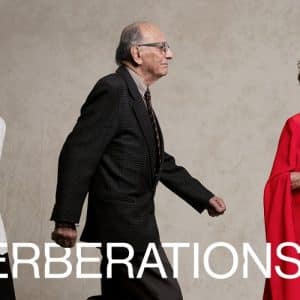

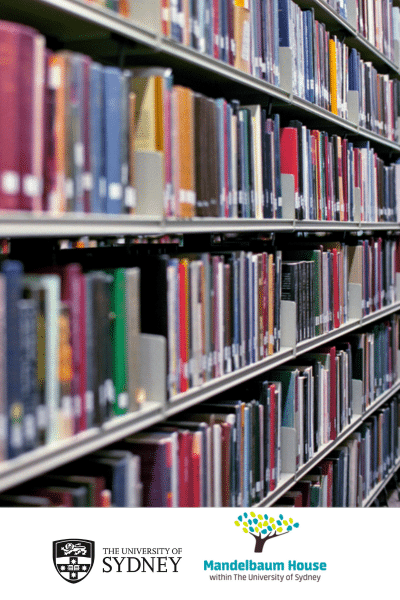
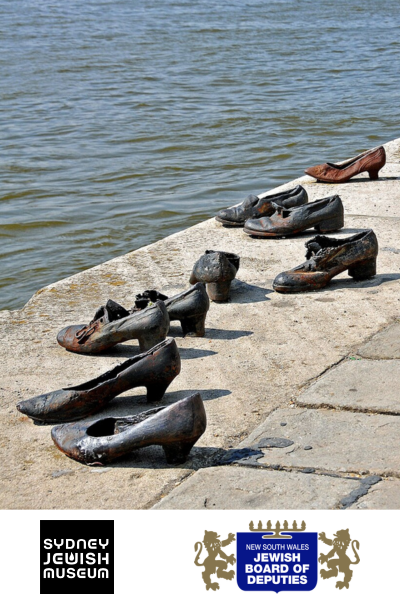

What’s On Newsletter
Keep up to date on all Museum events and exhibitions.